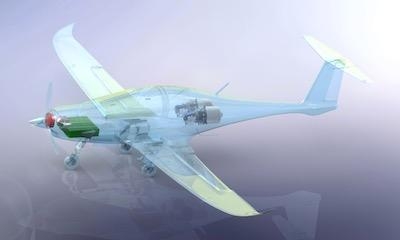Tue, Jul 26, 2022
Electric Flight Orchestra…
NASA’s Electrified Powertrain Flight Demonstration (EPFD) program seeks to hasten humankind’s transition from conventional, fossil-fuel-burning aircraft to ostensibly greener machines powered by Electrified Aircraft Propulsion (EAP) technologies. In collaboration with private industry partners, the space agency conducts ground and flight-tests of extant aircraft retrofitted with electric propulsion systems.

NASA posits that only by assessing and addressing the technical barriers and risks inherent fitting electric powertrains to existing airliners can standards be developed for future EAP aircraft. In addition to its regulatory aims, the EPFD program sets out to provide NASA’s aerospace industry partners data and experience by which to produce lighter, more powerful and efficient motors; improved pilot-interfaces with subject motors; and batteries and electronics conducive to maximizing aircraft safety and range.
NASA aspires to conduct at least two flight demonstrations of aircraft kitted out with electric powertrains developed under the auspices of its EPFD program within the next five-years. Longer-term, the space agency means to see such powertrains in broad use across America’s commercial airline fleet by 2035.
To meet its ambitious objectives, NASA has chosen a pair of U.S. companies—G.E. Aviation and MagniX—to develop electric propulsion technologies. To better motivate them, the two companies were awarded federal grants totaling $253-million—$179-million to G.E. and $74-million to MagniX.
The EPFD program is part of a larger NASA undertaking called Integrated Aviation Systems, which develops means by which to turn inchoate technologies into real-world, operational flight systems.

Across the globe, myriad companies are about the business of developing electric aircraft propulsion systems for light aircraft and the eVTOL vehicles saliant to emergent air-taxi markets. The diminutive size of such aircraft mitigates the weight—and therefore the output and endurance—of the batteries by which they’re powered. The regional and narrow-body aircraft upon which NASA’s EPFD program is predicated—by dint of their greater size and superior lift-production—allow for the carriage of heavy, powerful, long-lasting batteries that allow researchers to circumvent the fundamental, weight/power/endurance paradox by which the development of electric aircraft powertrains has been chronically hampered.
More News
He Attempted To Restart The Engine Three Times. On The Third Restart Attempt, He Noticed That Flames Were Coming Out From The Right Wing Near The Fuel Cap Analysis: The pilot repor>[...]
Make Sure You NEVER Miss A New Story From Aero-News Network Do you ever feel like you never see posts from a certain person or page on Facebook or Instagram? Here’s how you c>[...]
From 2009 (YouTube Edition): Leading Air Show Performers Give Their Best Advice for Newcomers On December 6th through December 9th, the Paris Las Vegas Hotel hosted over 1,500 air >[...]
Aero Linx: NASA ASRS ASRS captures confidential reports, analyzes the resulting aviation safety data, and disseminates vital information to the aviation community. The ASRS is an i>[...]
“For our inaugural Pylon Racing Seminar in Roswell, we were thrilled to certify 60 pilots across our six closed-course pylon race classes. Not only did this year’s PRS >[...]
 NTSB Final Report: Rutan Long-EZ
NTSB Final Report: Rutan Long-EZ ANN FAQ: Turn On Post Notifications
ANN FAQ: Turn On Post Notifications Classic Aero-TV: ICAS Perspectives - Advice for New Air Show Performers
Classic Aero-TV: ICAS Perspectives - Advice for New Air Show Performers ANN's Daily Aero-Linx (06.28.25)
ANN's Daily Aero-Linx (06.28.25) Aero-News: Quote of the Day (06.28.25)
Aero-News: Quote of the Day (06.28.25)




